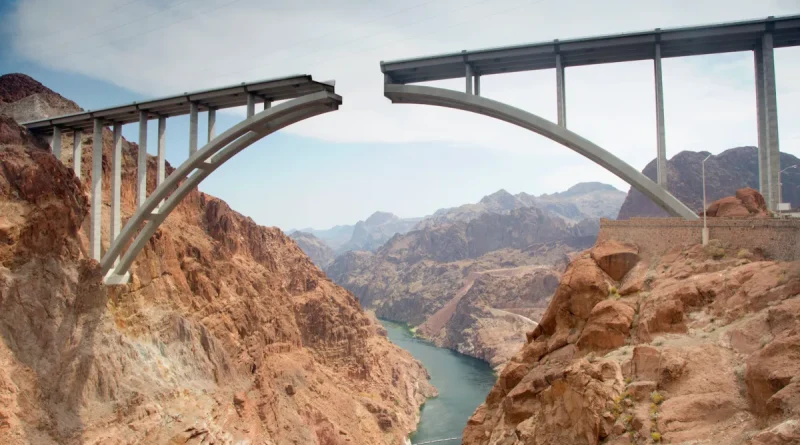Revolutionizing Bridge Construction: A Startup’s Breakthrough with Paper-Thin Stainless Steel
Interestingly, rust poses a major challenge for contemporary concrete.
To bolster strength, most concrete structures include steel rebar; yet, its corrosion can result in premature failures. Bridges, especially those exposed to water and salt, are particularly vulnerable. It is estimated that around one-third of bridges in the U.S. require repairs or replacements, which could cost nearly $400 billion over the next decade.
Engineers implement various techniques to combat rust, such as applying epoxy coatings to the rebar and increasing the concrete coverage to hinder water penetration. Unfortunately, these methods can eventually fail. The best way to avoid severe rust is to use stainless steel rebar, although this option is significantly more expensive.
“The cost is too high for widespread application on every bridge,” noted Steven Jepeal, co-founder and CEO of Allium Engineering, in an interview with TechCrunch. As a result, municipalities typically reserve its usage for the most critical structures.
Allium presents a compromise by encasing standard rebar in a thin layer of stainless steel, which can dramatically increase a bridge’s lifespan from 30 to 100 years.
“If we completely cover the surface, even a thin layer of stainless steel can withstand corrosion for hundreds or thousands of years,” stated Samuel McAlpine, co-founder and CTO of Allium.
Recently, Allium’s stainless steel-coated rebar was installed in a bridge deck replacement along U.S. Highway 101 in Mendocino County, California, with another installation scheduled for Interstate 91 in Massachusetts. This technology was also implemented at a commercial boat yard in Key West, Florida, as exclusively reported to TechCrunch.
Techcrunch event
San Francisco
|
October 27-29, 2025
For critical bridges with heavy traffic, engineers may choose stainless steel, which comes with a price tag about five times that of standard rebar. Governments often rationalize the extra cost to avoid disruptions caused by the closure of major routes.
On the other hand, most other bridges generally utilize epoxy-coated rebar, which is approximately 25% to 50% more expensive than uncoated options. However, epoxy-coated rebar needs to be kept in covered areas and requires repairs for any welds or nicks in the coating, leading to additional indirect costs.
Allium is marketing its stainless-clad rebar as an alternative to epoxy-coated rebar. The company aims to match and possibly undercut the pricing of epoxy coatings. Jepeal asserts that Allium’s rebar will be more affordable upon installation since it does not require careful handling or the additional concrete that some bridges use to mitigate rust.
“The extra layer of concrete isn’t structural; it merely acts as insulation for the rebar and delays the time it takes for salt to reach it,” Jepeal explained. Eliminating this layer could lower cement consumption by up to 20%, and because the rebar is less susceptible to corrosion, it might allow transportation departments to consider greener cements, which are generally less alkaline than traditional mixes, as indicated by McAlpine.
Allium’s process involves encasing 7,000-pound steel billets with a layer of stainless steel by essentially welding wires onto the exterior until completely covered. The billets, typically 6 to 8 inches square and 40 feet long, are then rolled out to achieve the desired thickness, from about a third of an inch to a few inches in diameter.
“By cladding a smaller surface area with a thicker layer and integrating it into the mill’s process, we offer a solution that is more cost-effective, scalable, and easier to maintain quality control,” Jepeal remarked.
As the billet is thinned out—growing up to 150 times longer in the process—the stainless steel layer also stretches. Ultimately, each piece of rebar ends up with around 0.2 mm of stainless cladding.
Even with this minimal amount, “the stainless steel is unlikely to suffer significant corrosion in concrete,” McAlpine concluded.



